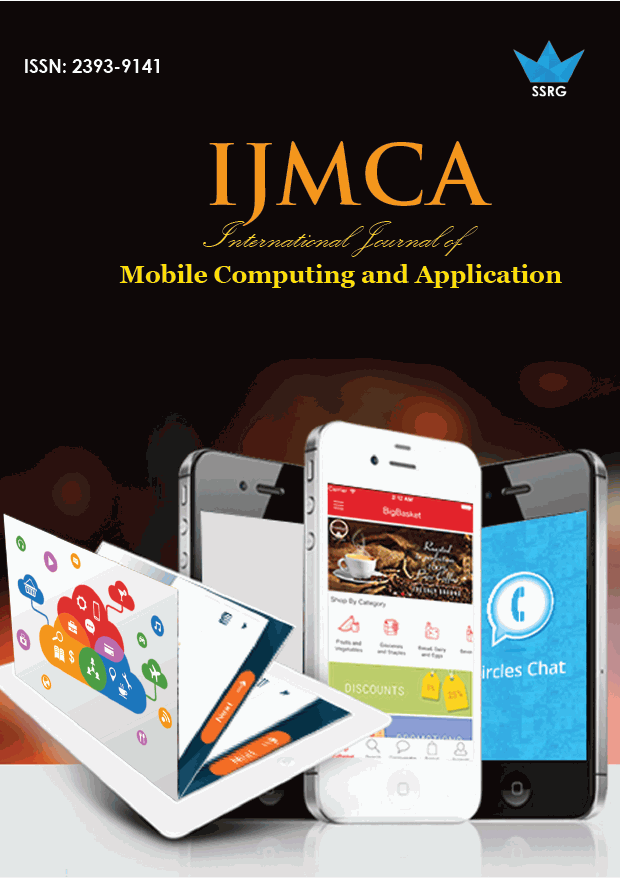Enhanced Image Compression System

| International Journal of Mobile Computing and Application |
| © 2019 by SSRG - IJMCA Journal |
| Volume 6 Issue 3 |
| Year of Publication : 2019 |
| Authors : Pavithra Mohan |
How to Cite?
Pavithra Mohan, "Enhanced Image Compression System," SSRG International Journal of Mobile Computing and Application, vol. 6, no. 3, pp. 1-7, 2019. Crossref, https://doi.org/10.14445/23939141/IJMCA-V6I3P101
Abstract:
Image compression is defined as the process of Data compression on digital images. The aim of image compression process is to reduce redundancy content of the image data in order to be able to store or transmit data in an efficient form. Image segmentation methods, which are primarily used for a data reduction process in image, can be used for compression. The reduced file created by the image compression process is called as compressed
file and is used to reconstruct the image, resulting in the decompressed image. There are many approaches implemented for image compression process. Huffman coding is loss less approach with extra attractive functions in diverse utility inclusive of medical survey and analysis, technical drawing and so on. Huffman coding has higher characteristics of image compression. Proposed work recognize that Huffman coding set of rules is a step by step manner and involves the variable length codes to input characters & it is useful in finding the entropy and probability of the kingdom. The discrete wavelet transform (DWT) refers to wavelet transformation method for which the wavelets are discretely sampled. A remodel which localizes a function both in area and scaling and has some ideal properties compared to the Fourier transform. This paper proposes a Multi Level DWT approach for image compression technique. This approach split the image into multiple matrix and apply DWT for compression. It has been show that the image
compression using Multi Level DWT provides better image quality than image compression using Huffman and other DWT compression technique.
Moreover, the Multilevel DWT is quite fastercompared to existing Image compression techniques.
Keywords:
Image Compression, Lossless compression technique, Huffman coding, DWT, Multi Level DWT
References:
[1] Han, Song, Huizi Mao, and William J. Dally. "Deep compression: Compressing deep neural networks with pruning, trained quantization and huffman coding." arXiv preprint arXiv:1510.00149 (2015).
[2] Raid, A. M., et al. "JPEG image compression using discrete cosine transform-a survey." arXiv preprint arXiv:1405.6147(2014).
[3] Mofreh, Amira, Tamer M. Barakat, and Amr M. Refaat. "A New Lossless Medical Image Compression Technique using Hybrid Prediction Model." Signal Processing: An International Journal (SPIJ) 10.3 (2016): 20.
[4] Sodha, MsNidhi, Daxa V. Vekariya, and MsHiral R. Shah. "IMPLEMENTATION OF IMAGE COMPRESSION USING SET PARTITIONING HIERARCHICAL TREE USING HUFFMAN ENCODING." Development 2.6 (2015).
[5] Tomar, Rime Raj Singh, and Kapil Jain. "Lossless image compression using differential pulse code modulation and its application." Computational Intelligence and Communication Networks (CICN), 2015 International Conference on. IEEE, 2015.
[6] E. C. Larson and D. M. Chandler, ―Most apparent distortion: Full-reference image quality assessment and the role of strategy,‖ J. Electron. Imag.,vol. 19, no. 1, pp. 001006:1–001006:21, Jan. 2010.
[7] W. Xue, L. Zhang, X. Mou, and A. Bovik.―Gradient magnitude similarity deviation: A highly efficient perceptual image quality index,‖ IEEE Trans. on Image Process., vol.23, no 2, pp. 684–695, Feb. 2014.
[8] Z. Wang, A. C. Bovik, H. R. Sheikh, and E. P. Simoncelli,―Image quality assessment: From error visibility to structural similarity,‖ IEEE Trans. Image Process., vol. 13, no. 4, pp. 600–612, Apr. 2004.
[9] Z. Wang, E. P. Simoncelli, and A. C. Bovik, ―Multiscale structural similarity for image quality assessment,‖ Proc. 37th Asilomar Conf. Signals, Syst., Comput.,Nov. 2003, pp.1398–1402.
[10] Z. Wang and Q. Li, ―Information content weighting for perceptual image quality assessment,‖ IEEE Trans. Image Process., vol. 20, no. 5, pp. 1185–1198, May 2011.

 10.14445/23939141/IJMCA-V6I3P101
10.14445/23939141/IJMCA-V6I3P101